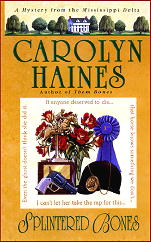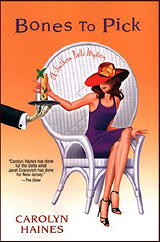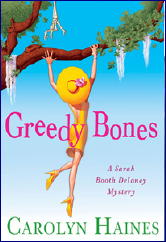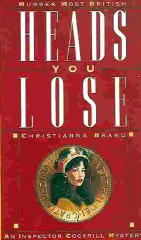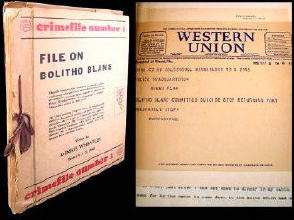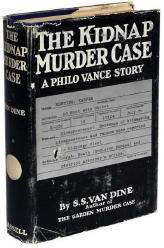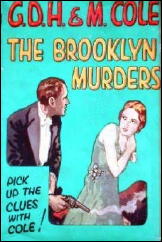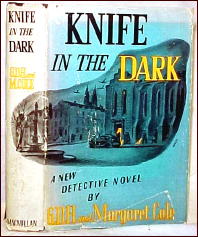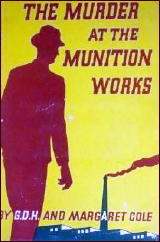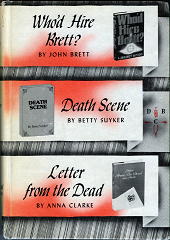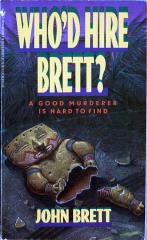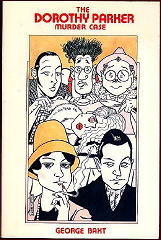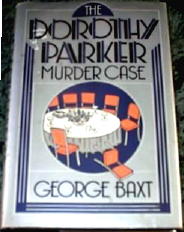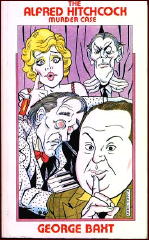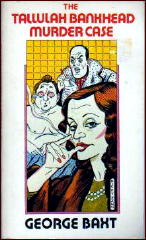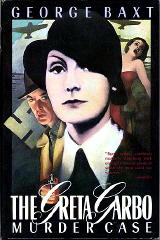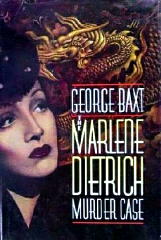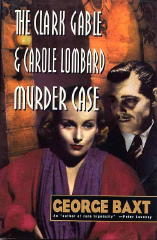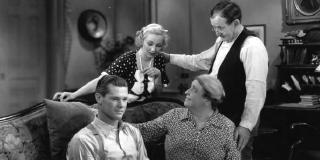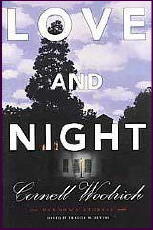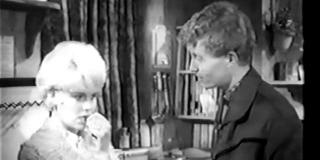David Vineyard wrote this in response to Bill Pronzini’s
1001 Midnights review of
Knife in the Dark, by G. D. H. and Margaret Cole, in which it was pointed out that G. D. H. Cole was a noted social and economic historian as well as one half of a pretty good writing team. Patti Abbott picked up on this, and I added that Father Ronald Knox was another author who was certainly known for writing more than mysteries. Here from David are a good many others. — Steve
The non-writing careers of writers is always fascinating, and not just those like Dick Francis, Dashiell Hammett, Ian Fleming, John Le Carre, Joseph Waumbaugh, Joe Gores, Erle Stanley Gardner, or Graham Greene whose work is reflected in their writing (in order, jockey, private detective, journalist/spy, diplomat/spy, policeman, private detective, lawyer, and journalist/spy).
Rex Stout was a millionaire before he was 22 for designing a system of accounting for public schools in Wisconsin, had a long career as a pulp writer, wrote a novel compared to Philip Wylie and F. Scott Fitzgerald (How Like a God), and then at 40 created Nero Wolfe. Raymond Chandler was an oil exec until the Depression hit and then turned to writing at 45. Edgar Rice Burroughs wrote Tarzan on the back of the letterhead stationary for his bankrupt haberdashery when he was thirty-nine after a career of differing jobs including fighting Geronimo in the cavalry.
Agatha Christie was a nurse in WWI in charge of the poisons cabinet (which she became an expert on) and P.D. James a nursing administrator. Sax Rohmer and P. G. Wodehouse (best friends) were both clerks at the same bank in Alexandria Egypt — where later C. S. Forester (Horatio Hornblower) and Geoffrey Household briefly worked.
Conan Doyle was an optometrist (though never a succesful one) and Margery Allingham came from a family of pulp writers who filled the pages of the countless Boys’ Own Paper type publications in England, writing everything from Robin Hood and Billy Bunter to Sexton Blake. Leslie Charteris was a failed cartoonist — ironic in that he ended up writing Secret Agent X-9 and The Saint strips.
During WWII Eric Ambler was John Huston’s cameraman in Italy on the Oscar winning Battle of San Pietro, and Max Brand died in Italy while working as a war correspondent.
John Buchan topped almost everyone. After a distinguished career in many important political roles he was Governor-General of Canada in the critical years before WWII — often credited with healing the rift between Canadian Prime Minister Mackenzie King and London and deepening the alliance between Canada and the US (and if you think that is overstating his importance, even Winston Churchill gave him credit for insuring Canada stayed in the Commonwealth and supported England in the war).
In his real life S. S. Van Dine (Willard Huntington Wright) was a distinguished art critic. A. E. W. Mason was a secret agent for the British Admiralty whose pre-WWI network in Spain operated as the primary Allied network in that country well into the Cold War and who once foiled an almost Bondian biological warfare plot to smuggle anthrax infected animals into the Allies stock in WWI.
Edmund Crispin was conductor/ composer Robert Montgomery, who wrote the film scores for the Carry On films among others. Mystery writer Laurence Payne starred on stage and film (The Crawling Eye …) and played Sexton Blake on BBC television for years. Alan Cailliou, who wrote numerous suspense and adventure novels, was a familiar character actor in films and television.
Twenties and thirties adventure, mystery writer Achmed Abdullah was not only the son of a Romanov Prince and an Indian Queen, but spent a lifetime as an officer in the British Army. Talbot Mundy was a con-man before an illness reformed him and he turned to writing, and German writer Karl May was born blind, regained his sight, became a criminal, and reformed to become a beloved storyteller loved by Einstein, Herman Hesse, and Albert Schweitzer (and alas also Hitler) — and responsible for all those Winnetou movies with Stewart Granger and Lex Barker that in turn inspired the Spagetti Western — so he may not be all that innocent or reformed.
Zane Gray was a dentist, John Gardner an ex-SAS special forces op and leftist reverend, Van Wyck Mason an army engineer for twenty years before he created Colonel Hugh North, and Elizabeth Peters/Barbara Michaels is really distinguished Eyptologist Barbara Mertz.
Edgar Wallace, aside from being a journalist, was a race track tout, Peter Cheyney a secretary for Oswald Mosely’s fascist Black Shirts in England (briefly and before Mosely turned from nut to traitor), and Gerard Fairlie, aside from being the real life model for Bulldog Drummond, was a member of the Royal House Hold cavalry and favorite of the Queen.
John Mortimer the author of the Rumpole mysteries was the barrister who won the landmark Crown vs Lady Chatterly’s Lover case in the early sixites that broke the back of censorship in British publishing. John B. West, author of the Spillane-ish Rocky Steele books, was a West African doctor in general practice.
Techno thriller writer Tom Clancy was an actuarial table expert for the insurance industry, and current bestseller James Rollins a veternarian. Michael Innes was an Oxford don (J.I.M. Stewart) and prolific John Creasey created his own political party and stood for office.
A few are even fitting, Donald MacKenzie (Nowhere to Run) who wrote about reformed thieves and John Raven, a retired Special Branch officer who lived on a houseboat on the Thames, was himself, a reformed thief. Solicitors Michael Gilbert and John Welcome were literary agents to Raymond Chandler and Dick Francis respectively.
The late Michael Crichton began his career writing under the pseudonyms John Lange and Jeffrey Hudson so he wouldn’t be thrown out of medical school for moonlighting. Western historical novelist Will Henry wrote cartoons for MGM with Tex Avery as Heck Allen. Douglas Preston of the bestselling team of Preston and Lincoln Childs worked for the Museum of Natural History in New York.
Brett Halliday and Jim Thompson were both oilfield roughnecks. William Henry Porter, or O. Henry, was a convicted embezzler who began telling stories while serving in Sing Sing. W. Somerset Maugham was a medical student who began writing for the extra money. Jeffrey Archer reversed the process, beginning as a writer and now an ex politician and convicted felon.
Pulpster Walter Gibson was a PR man for Harry Houdini and Norvell Page, author of the Spider, gave up writing to work for the government during WWII eventually becoming secretary to the postwar Hoover Commission and an official in the Atomic Energy Commission (and if the author of the Spider, who used to go out on the beach in Miami dressed in a slouch hat a black cloak, working for the A.E.C. doesn’t make you uneasy, nothing will). Nicholas Boving, who writes the Maxim Gunn thrillers, currently was a mining engineer who used to traipse around the world from Africa to Western Australia.
The fact is writers come from a variety of backgrounds — and sometimes a name that we are only familiar with in terms of our leisure reading will have a completely different connotation to others in another field. For example Nicholas Blake often mentioned here as one of the icons of the golden age of the detective story (which he was) was also C. Day Lewis, the father of actor Daniel Day Lewis, and Poet Laureate of England. Sort of puts his detective writing career in perspective.
